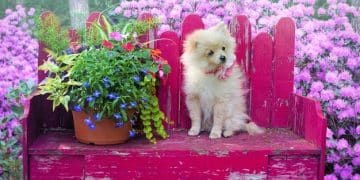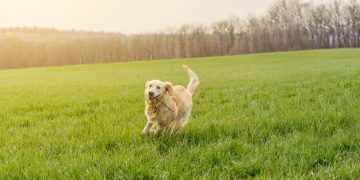Pet-Friendly Garden: Safe Plants & Landscaping Ideas
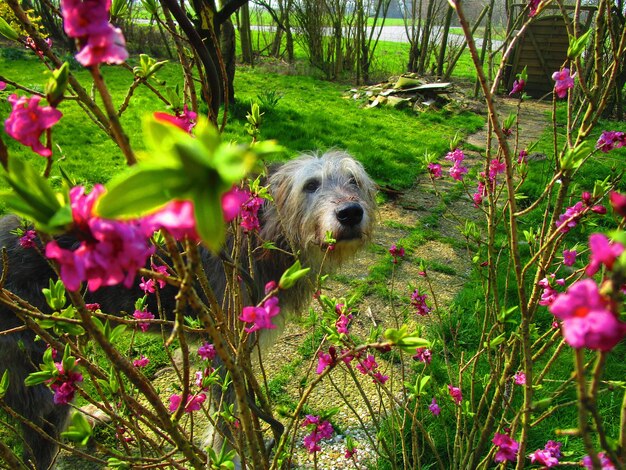
Creating a pet-friendly garden involves selecting non-toxic plants, designing safe pathways, and incorporating pet-friendly features to ensure your furry friends can enjoy the outdoors without risk.
Want to create a beautiful garden that’s also safe for your beloved pets? Creating a pet-friendly garden is easier than you think! Let’s explore how to make your outdoor space a haven for both you and your furry companions.
Creating a Safe Space for Your Pets
Creating a safe outdoor environment for your pets is essential for their well-being and your peace of mind. A pet-friendly garden ensures that your furry friends can explore and play without the risk of ingesting harmful plants or encountering dangerous landscaping features.
By taking a few precautions and making thoughtful choices, you can transform your backyard into a secure and enjoyable space for your pets.
Identifying Potential Hazards
Before you start planting, take a moment to identify potential hazards in your existing garden. This includes toxic plants, sharp objects, and areas where your pet could escape.
- Remove toxic plants such as lilies, azaleas, and rhododendrons.
- Secure any gaps in your fence to prevent escapes.
- Cover or remove any sharp objects like gardening tools or broken pots.
Addressing these hazards is the first step in ensuring your garden is a safe place for your pets to roam.
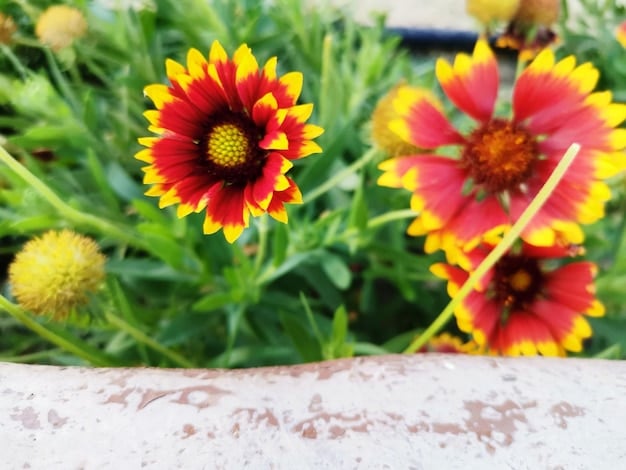
Choosing Safe Plants for Your Pet-Friendly Garden
Selecting the right plants is crucial when creating a pet-friendly garden. Many common garden plants are toxic to pets and can cause serious health issues if ingested. Choosing safe alternatives ensures that your pets can explore the garden without danger.
Opting for non-toxic plants allows you to create a beautiful and vibrant garden that’s also safe for your furry friends.
Popular Safe Plant Choices
There are many beautiful and pet-safe plants to choose from when designing your garden. Some popular options include:
- Sunflowers: These cheerful blooms are non-toxic and provide a sunny addition to any garden.
- Petunias: Available in a wide range of colors, petunias are a safe and easy-to-grow option.
- Zinnias: These vibrant flowers attract butterflies and are safe for both dogs and cats.
These plants not only add beauty to your garden but also ensure the safety of your pets.
Designing Pet-Friendly Pathways
The layout of your garden can play a significant role in your pet’s safety. Well-designed pathways can prevent your pets from trampling delicate plants and reduce the risk of them ingesting something harmful. Creating a pet-friendly garden includes thoughtful path design.
Consider incorporating pet-friendly pathways to guide your furry friends through the garden safely.
Materials for Safe Pathways
When choosing materials for your garden pathways, opt for options that are gentle on your pet’s paws and prevent overheating. Some safe and practical choices include:
- Gravel: Small, smooth gravel is easy on paws and provides good drainage.
- Mulch: Wood chips or bark mulch can create a soft and natural pathway.
- Flagstone: Flat stones are easy to walk on and add a rustic touch to the garden.
Avoid using materials that get too hot in the sun or are treated with chemicals that could be harmful to your pets.
Creating a Designated Digging Area
Many dogs love to dig, and providing a designated digging area can help protect your other plants. By creating a pet-friendly garden with a specific digging zone, you can redirect your dog’s natural instincts and minimize damage to your landscaping.
A designated digging area can also keep your dog entertained and engaged in a safe and controlled environment.
Setting Up a Digging Zone
To create a designated digging area, choose a spot in your garden and fill it with pet-safe materials. Some ideas include:
- Sand: Soft, clean sand is a popular choice for digging areas.
- Soil: Loose, uncompacted soil provides a more natural digging experience.
- Mix of materials: Combine sand and soil for a varied digging texture.
Encourage your dog to use the digging area by burying toys or treats in the designated spot.
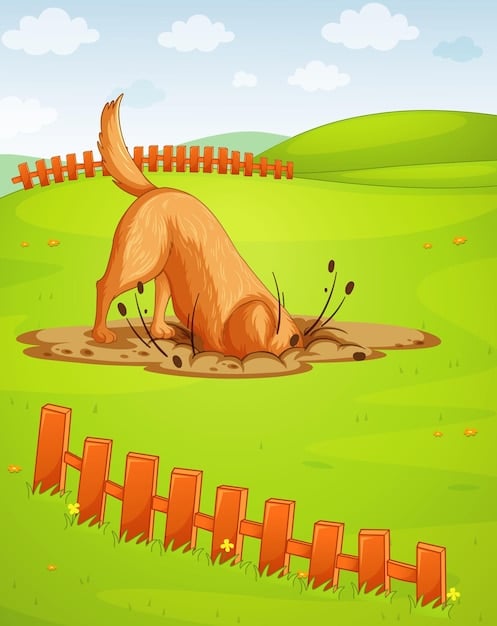
Incorporating Water Features Safely
Water features can add a beautiful and relaxing element to your garden, but it’s important to ensure they are safe for your pets. Creating a pet-friendly garden often involves carefully selected and positioned water features.
Consider adding a shallow water feature where your pets can drink and cool off on hot days, while keeping it safe and accessible.
Safe Water Feature Options
When choosing a water feature for your pet-friendly garden, consider these options:
- Shallow bird bath: A wide, shallow bird bath allows pets to drink without the risk of falling in.
- Small pond with a gentle slope: If you opt for a pond, ensure it has a gentle slope so pets can easily enter and exit.
- Fountain with a wide base: Choose a fountain with a wide, stable base to prevent tipping.
Avoid using water features with steep sides or deep water, as these can pose a drowning risk.
Protecting Your Garden from Pets
While it’s important to make your garden safe for your pets, you also need to protect your plants from being trampled or dug up. Creating a pet-friendly garden means finding a balance between your pets’ needs and the health of your plants.
Utilizing barriers and deterrents can help keep your pets away from delicate plants and protect your garden from damage.
Effective Barriers and Deterrents
Consider using these methods to protect your garden from curious pets:
- Low fences: A simple fence can keep pets out of flower beds and vegetable gardens.
- Raised beds: Planting in raised beds makes it harder for pets to reach your plants.
- Natural deterrents: Use scents like citrus peels or vinegar to deter pets from digging in certain areas.
By implementing these strategies, you can maintain a beautiful garden while ensuring your pets have a safe and enjoyable outdoor space.
| Key Point | Brief Description |
|---|---|
| 🌱 Safe Plants | Choose non-toxic plants like sunflowers and petunias. |
| 🐾 Safe Pathways | Use gravel or mulch for pet-friendly pathways. |
| ⛱️ Digging Area | Create a designated area for digging with sand or soil. |
| 💧Water Feature | Incorporate shallow water features for pets. |
Frequently Asked Questions
▼
Common plants that are toxic to pets include lilies, azaleas, rhododendrons, tulips, and daffodils. It’s essential to research plants before adding them to your garden to ensure they are safe for your furry friends.
▼
Provide a designated digging area with sand or loose soil. Bury toys or treats to encourage use. Use natural deterrents like citrus peels or vinegar in areas you want to protect. Ensure the digging area is more appealing than other areas in the garden.
▼
Safe materials for garden pathways include small, smooth gravel, wood chips or bark mulch, and flat stones. Avoid materials that get too hot in the sun or are treated with harmful chemicals. Always ensure the surface is paw friendly.
▼
Opt for shallow water features like bird baths or ponds with gentle slopes. Ensure pets can easily enter and exit the water without the risk of drowning. Keep the water clean and free of algae to avoid health issues.
▼
Yes, sunflowers, petunias, zinnias, and impatiens are safe for both dogs and cats. These flowers add color to your garden and are non-toxic if ingested. Always double-check before planting anything new, to be sure.
Conclusion
Creating a pet-friendly garden allows you and your beloved animals to enjoy the outdoors safely and harmoniously. By choosing non-toxic plants, designing safe pathways, and incorporating pet-friendly features, you can create an environment where both your garden and your pets can thrive. The result will be greatly rewarding for both owner and furry friend.
